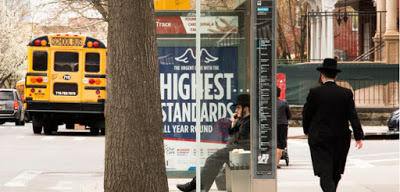Despite Recent Attacks, Anti-Semitism in the US Remains Low
 |
| Leonard Weinberg – MAY 30, 2019 |
How should we reconcile the historically low level of Americans’ negative feelings about Jews with the recent surge in attacks on Jews?
The April 27 attack on the Chabad synagogue in Poway, a suburb of San Diego, California, set off alarms within American Jewish communities. The attack came six months after another lone-wolf assault that killed 11 worshippers at the Tree of Life synagogue in Pittsburgh. Both these events followed the August 2017 Unite the Right rally (and subsequent rioting) in Charlottesville, Virginia, during which a variety of neo-Nazi, KKK and white supremacists chanted “The Jews will not replace us” before an assemblage of anti-fascist counterprotesters, curious onlookers and, most importantly, television cameras.
From the point of the country’s leading watchdog organizations, the Anti-Defamation League (ADL) and the Southern Poverty Law Center (SPLC), these were not isolated incidents.
Both the ADL and the SPLC, along with other hate-crime monitors, report high levels of attacks on Jews and their institutions throughout the country over the last few years. (The Community Security Trust in the UK reports a similar upsurge.) The ADL, for example, reports that “There were 1,986 anti-Semitic incidents reported across the United States in 2017, including physical assaults, vandalism, and attacks on Jewish institutions. This figure represents a 57 percent increase over the 1,267 incidents in 2016.” Alarm bells are certainly ringing.
Does this increase in violence against American Jews reflect a mounting level of popular hostility toward them by Americans in general? Were the attacks like the proverbial canary in the coal mine, a forecast of worse to come? The answer, so far as I’m able to discern, is certainly not. Some years before these anti-Semitic attacks, the ADL was able to carryout a worldwide survey of anti-Semitic attitudes in some 100 countries dispersed across all continents. The attitude survey employed the same 11-item scale the ADL has used over the years to measure the prevalence of anti-Semitism in the US and elsewhere.
Taken in 2015, the survey found that 9% of American adults qualified as anti-Semites. Further, this relatively modest figure represented a decline in the level of anti-Semitism from previous years. Other survey evidence suggests that, on balance, Americans like Jews, regarding them as hard-working and family-oriented people. If anything, Americans overall tend to be philo-Semitic. In the long term there has been a steady decline in anti-Semitic attitudes among Americans since the 1940s and 1950s, when a substantial segment of the public expressed highly negative attitudes about Jews.
If we consider American anti-Semitism in comparative perspective, its modest level becomes more apparent. Aside from the United Kingdom, where the survey recorded that 8% of Britons expressed significant anti-Semitic attitudes, Americans were the least hostile to Jews than any population among Western countries, according to the ADL’s survey. Some 37% of the French population, for example, was recorded as anti-Semitic. In Greece the figure reached a staggering 69%.
How then should we reconcile the historically low level of Americans’ negative feelings about Jews with the recent surge in attacks on Jews? In statistical terms, the lines seem to be going in opposite directions. One way of looking at what is seemingly hard to reconcile is by referring to what we might label a “cultic milieu.” That is, we are dealing with a small cluster of conspiracy-minded individuals, typically single men, strung together by the internet, whose negative views about Jews have been reinforced by online “opinion leaders” and an awareness there are others like them operating in cyberspace.
The fact that anti-Semitic attitudes are waning among the general American population constitutes a spur to action. Individuals inside this anti-Semitic milieu feel compelled to warn the public about the threat Jews pose to white, native-born Americans. Their violence is, at least in part, intended to ignite more widespread Jew-hating operations, such as those depicted in William Pierce’s call to violence, The Turner Diaries.
Can this tactic work? The reality appears to be that the violence has the opposite effect. The public responses to these attacks are collective expressions of solidarity with the Jewish community by local and national religious and political leaders as well as members of the general public, large numbers of whom are seen on television screens throughout the country offering their condolences.
The situation in continental Europe seems different. At least in some countries, like Greece or Russia, anti-Semitism enjoys a mass base of support, reinforced presently by hostility to the state of Israel and its behavior toward the Palestinians (this is particularly the case in countries with large Muslim populations). In these locales, attacks on Jews may stimulate more of the same and the formation of a more substantial political movement. The likelihood of a similar development in the United States appears pretty remote.
*[The Centre for Analysis of the Radical Right is a partner institution of Fair Observer.]
The views expressed in this article are the author’s own and do not necessarily reflect Fair Observer’s editorial policy.


